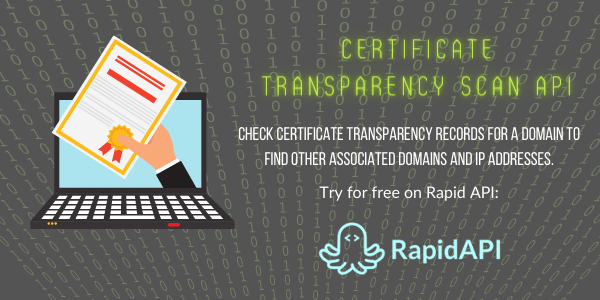Top OATH API Vulnerabilities

Top OATH API Vulnerabilities: Intro
When it comes to exploits, APIs are the greatest place to start. API access usually consists of three parts. Clients are issued tokens by an Authorization Server, which runs alongside APIs. The API receives access tokens from the client and applies domain-specific authorization rules based on them.
Modern software applications are vulnerable to a variety of dangers. Keep up to speed on the most recent exploits and security flaws; having benchmarks for these vulnerabilities is essential to assure application security before an attack happens. Third-party applications are increasingly relying on the OAuth protocol. Users will have a better overall user experience, as well as faster login and authorization, thanks to this technology. It may be more secure than conventional authorization since users don’t have to disclose their credentials with the third-party application in order to access a given resource. While the protocol itself is safe and secure, the way it is implemented might leave you open to attack.
When designing and hosting APIs, this article focuses on typical OAuth vulnerabilities, as well as various security mitigations.
Broken Object Level Authorization
There is a vast attack surface if authorization is violated since APIs provide access to objects. Since API-accessible items must be authenticated, this is necessary. Implement object-level authorization checks using an API gateway. Only those with the appropriate permission credentials should be allowed access.
Broken User Authentication
Unauthorized tokens are another frequent way for attackers to obtain access to APIs. Authentication systems may be hacked, or an API key may be mistakenly exposed. Authentication tokens may be used by hackers to acquire access. Authenticate people only if they can be trusted, and use strong passwords. With OAuth, you can go beyond mere API keys and get access to your data. You should always think about how you’ll get in and out of a place. OAuth MTLS Sender Constrained Tokens may be used in conjunction with Mutual TLS to guarantee that clients do not misbehave and pass tokens to the incorrect party while accessing other machines.
Excessive Data Exposure
There are no constraints on the number of endpoints that may be published. Most of the time, not all features are available to all users. By exposing more data than is absolutely necessary, you put yourself and others at danger. Avoid disclosing sensitive information until it is absolutely necessary. Developers may specify who has access to what by utilizing OAuth Scopes and Claims. Claims may specify which sections of the data a user has access to. Access control may be made simpler and easier to manage by using a standard structure across all APIs.
Lack of Resources & Rate Limiting
Black hats often use denial-of-service (DoS) assaults as a brute-force way of overwhelming a server and so reducing its uptime to zero. With no restrictions on the resources that may be called, an API is vulnerable to a debilitating assault. ‘Using an API gateway or management tool, you may set rate restrictions for APIs. Filtering and pagination should be included, as well as answers being restricted.
Misconfiguration Of The Security System
Different security configuration guidelines are fairly comprehensive, owing to the significant likelihood of security misconfiguration. A number of little things might jeopardize your platform’s security. It is possible that black hats with ulterior purposes may discover sensitive information sent in response to malformed queries, as an example.
Mass Assignment
Just because an endpoint isn’t publicly defined doesn’t imply it can’t be accessed by developers. A secret API may be readily intercepted and reverse-engineered by hackers. Take a look at this basic example, which uses an open Bearer Token in a “private” API. On the other hand, public documentation may exist for something that is exclusively meant for personal use. Exposed information may be used by black hats to not only read but also manipulate object characteristics. Consider yourself a hacker as you search for potential weak points in your defenses. Allow only those with proper rights access to what was returned. To minimize vulnerability, limit the API response package. Respondents should not add any links that aren’t absolutely required.
Promoted API:
Improper Asset management
Aside from enhancing developer productivity, current versions and documentation are essential for your own safety. Prepare for the introduction of new versions and the deprecation of old APIs far in advance. Use newer APIs instead of allowing older ones to remain in use. An API Specification could be used as a primary source of truth for documentation.
Injection
APIs are vulnerable to injection, but so are third-party developer apps. Malicious code may be used to delete data or steal confidential information, such as passwords and credit card numbers. The most important lesson to take away from this is to not depend on the default settings. Your management or gateway supplier should be able to accommodate your unique application needs. Error messages should not include sensitive information. To prevent identity data from leaking outside the system, Pairwise Pseudonyms should be used in tokens. This ensures that no client may work together to identify a user.
Insufficient Logging And Monitoring
When an attack does take place, teams require a well-thought-out reaction strategy. Developers will continue to exploit vulnerabilities without being caught if a reliable logging and monitoring system isn’t in place, which will increase losses and damage the public’s perception of the company. Adopt a strict API monitoring and production endpoint testing strategy. White hat testers that find vulnerabilities early on should be rewarded with a bounty scheme. The log trail may be improved by including the user’s identity into API transactions. Ensure that all layers of your API architecture are audited by using Access Token data.
Conclusion
Platform architects may equip their systems to keep one step ahead of attackers by following established vulnerability criteria. Because APIs may provide accessibility to Personally Identifiable Information (PII), maintaining the security of such services is critical for both company stability and compliance with legislation such as GDPR. Never send OAuth tokens directly over an API without using an API Gateway and the Phantom Token Approach.






